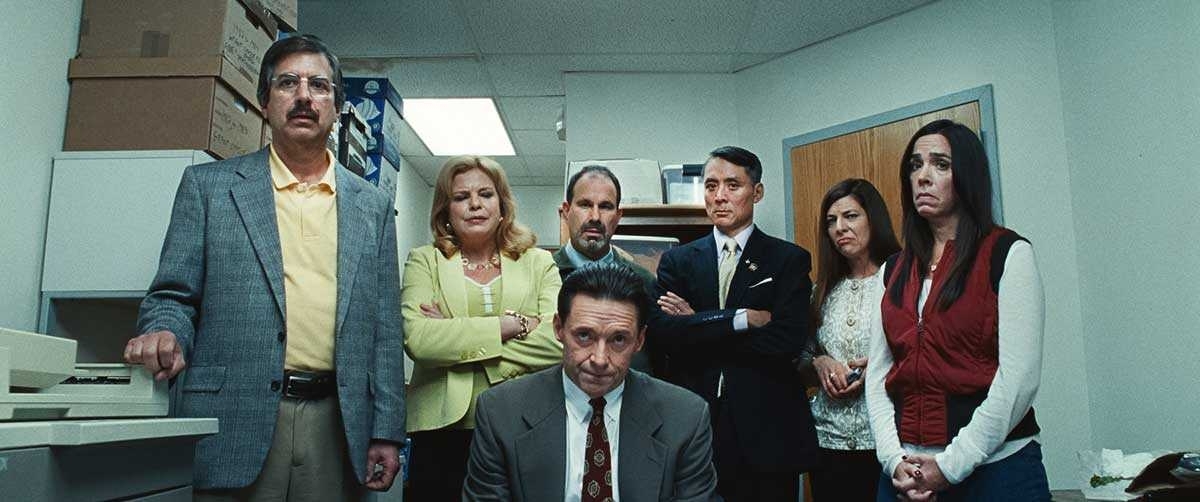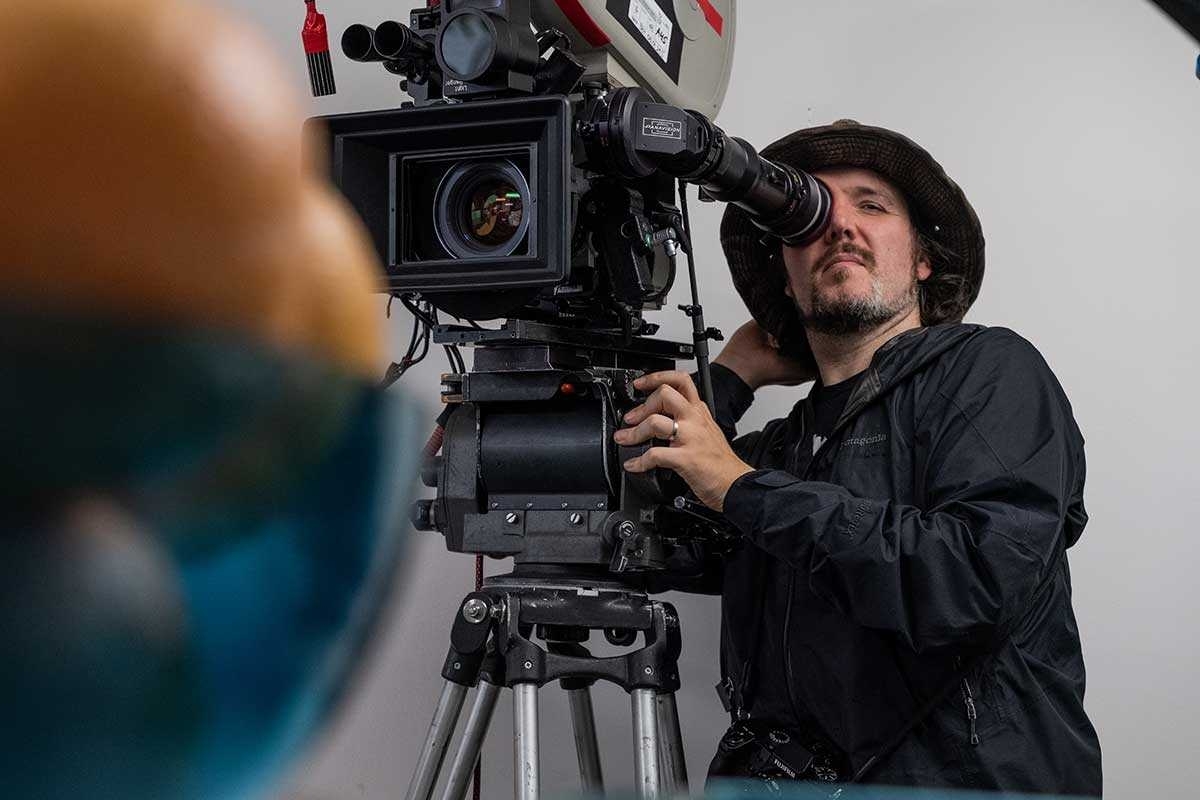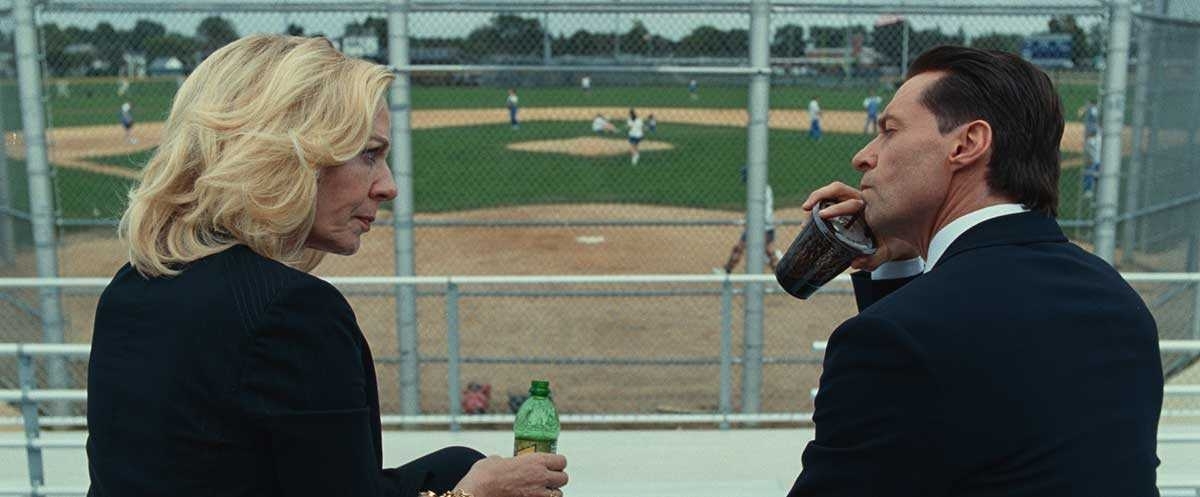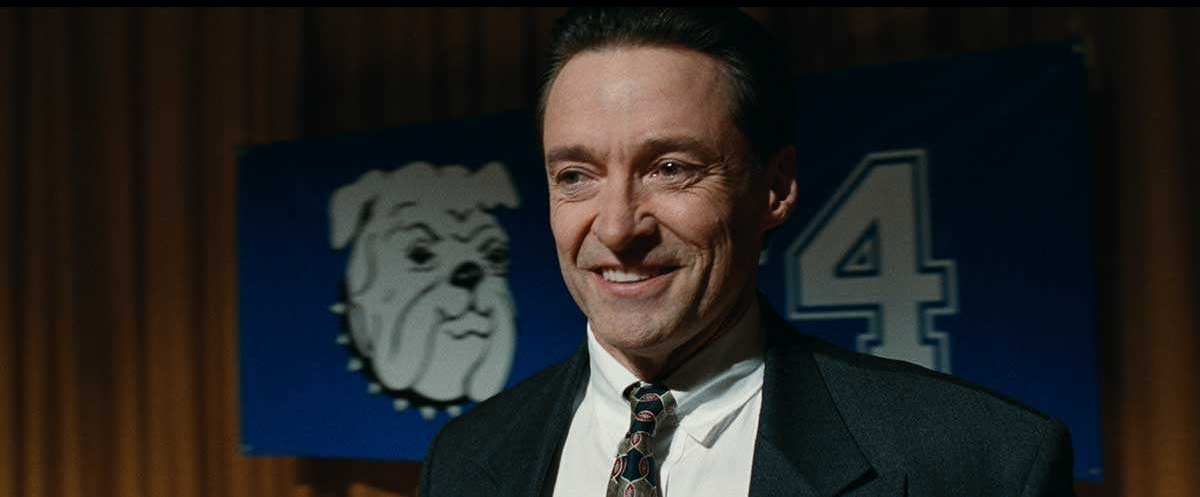Lyle Vincent gets a 'Bad Education' with Film

Being able to get the ensemble cast of Hugh Jackman, Ray Romano, Catherine Curtin, Michael Jay Henry, Robert Toshi Chan, Dina Pearlman and Finnerty Steeves right across the frame contributed to the decision to go with the widescreen format. Image courtesy of HBO.
Following his feature directorial debut Thoroughbreds, filmmaker Cory Finley reunites with cinematographer Lyle Vincent on Bad Education. The comedy-drama was inspired by a New York public school embezzlement scandal involving former superintendent Frank Tassone and was written by Mike Makowsky, who met him while attending Roslyn Middle School. "Thoroughbreds had a more stylistic edge to it as we wanted to emulate the noir films with bold colors and weird camera angles," states Vincent. "Bad Education was more straightforward and all about the performances." From the beginning the comedy drama was going to be widescreen with an aspect ratio of 2.39:1. "At the time we were aiming for a theatrical release, and it allowed us to have the ensemble cast right across the frame."
Shooting on film was an idea supported by the producers of the project. "Fred Berger had done La La Land and is a film lover and understands the value of it," remarks Vincent. "Cory had never shot on film but loved the idea. I shot some still photography tests with CineStill on medium format and a Leica 35mm loaded up with KODAK VISION3 500T 5219 Color Negative Film. They had removed the Remjet layer so then you can develop it as C-41. I would take test photos of the actors in makeup in the production office and even went to some of the locations to take stills. I developed them myself at home. I have a Jobo machine to develop and scan them. Cory got really enthusiastic." The goal was to have naturalistic imagery. "I started off in film and then hadn't shot film in about nine years before I did this movie. I got so used to shooting digital. Right away you see it. It's undeniable that digital cannot replicate skin tones the way that film does. There's something about the depth of color, contrast and the three-dimensionality of the grain."

Lyle Vincent enjoyed the opportunity to shoot on film after focusing on digital moviemaking for the past nine years. Image courtesy of HBO.
"It was 5219 for the majority of Bad Education," remarks Vincent. "We did shoot some KODAK VISION3 5207 250D Color Negative Film for daylight." The film stock was three perf and was generally not manipulated. "I may have pushed it on one scene at night to get an extra umph. Everything was developed normally and slightly overexposed. We graded everything at 400 ISO. All of the lenses were clean Panavision Primo Primes with no added filters and we didn't use any zoom. We had 14mm, 20mm, and 27mm was used a lot." Two Panavision Millennium XL2 cameras were present on set almost every day. "It was more of a one camera approach. We had a second camera for when we needed to do breakaway or skeleton crew things." The newsreel footage was captured on a different format. "I'm a huge believer of using the actual cameras and mediums of the time because it's hard to replicate to them. We used a news camera circa 2002 [which I found on eBay] and shot on MiniDv."
LEDs were an important part of the lighting setup with HMI's utilized outside of windows. "LEDs were easy to hide because of being thin and low profile," notes Vincent. "I had a lot of fluorescent lights in the space already and had them replaced with new color correct bulbs. Sometimes we left the ones that were already there because we wanted it to be a bit green. I added LED with gel to match them." The office of Frank Tassone was constructed on a soundstage. "In order to keep it exactly the same I used HMIs." Moonlight had to be produced for the night scenes. "We had a 20x20 box with a LED LiteMat that was thin, lightweight, easy to move around, and could change color on the ground. It was really handy in that way."

Allison Janney and Hugh Jackman in "Bad Education." Image courtesy of HBO.
Six to seven weeks were devoted to prep and principal photography, which took place in Long Island and the Bronx. "We couldn't shoot where this actually took place because they didn't want anything to do with us," states Vincent. "We shot in many different schools for the administration office, hallways, entrance, and exteriors. It was a lot of hard work for production designer Meredith Lippincott and costume designer Alex Bovaird. Meredith put us onto Swedish still photographer Lars Tunbjörk, and I started using his work as a lighting reference. He has a series called Office which is top lit and everything is off-white. It has this stark beauty. Tunbjörk photographed all of these offices around the world with a high key flash. We didn't go quite that far with the lighting." Weather was not a major issue. "There was one scene in Las Vegas. We found a location out on Long Island and added some palm trees."
Key crew members were gaffer Jerad Molkenthin, key grip Rob Harlow, A camera Steadicam operator Matthew Fleischmann, B camera operators Aileen Taylor and Toshiro Yamaguchi, 1st AC's Kevin Akers and Douglas Durant, 2nd AC's Cornelia Klapper and Christopher Cafaro, film loaders Joshua Bote and James Dean Drummond, and colorist Tim Poole at Company 3. "The raw footage had a blue cast to it, and we graded that back a little bit to get the natural skin tone," remarks Vincent. "The shadows and the background stayed in a blue tone. All of the photography by Lars Tunbjörk is cold and stark, and we kept align with that." A couple key scenes were storyboarded. "We had a shot list beforehand and left it open for happy accidents," states Vincent. "The beauty of working with Allison Janney and Hugh Jackman is that they are always in character and bring something new with every take."

A personal favorite of Lyle Vincent is the opening Steadicam shot that follows Frank Tassone (Hugh Jackman) from the bathroom to an auditorium stage where students are cheering him. Image courtesy of HBO.
A personal favorite is the opening shot. "It is a long Steadicam move that follows Frank Tassone [Hugh Jackman] from the bathroom, through a hallway to the back of a stage to the stage," states Vincent. "You see the crowd cheering him on, the camera swoops around and shows him. The film aspect was incredible because it enabled us to tell the story in a unique way because not as many movies are shot in film anymore. Especially, a movie like this which is all about the characters and their faces. Film is so perfect for that. I'm so interested in keeping film alive, respecting it and using it as a visual storytelling tool. I want to support it as much as I can."